Fast Fashion Giant Moves Away from Plastic Packaging
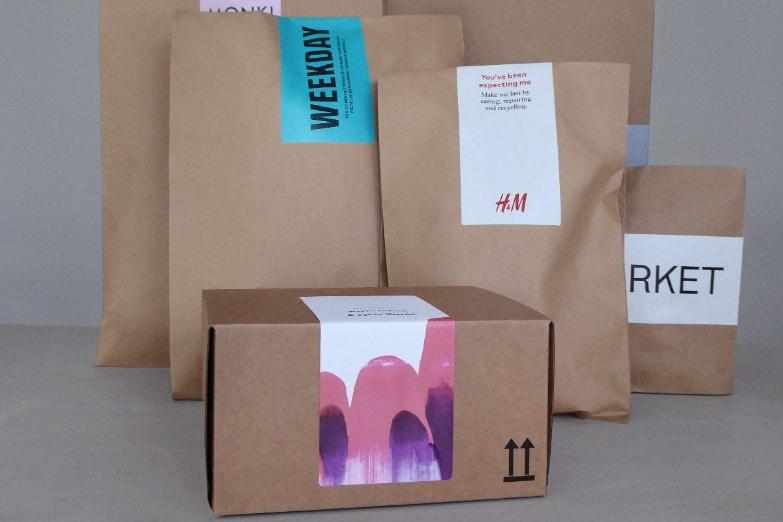

The surge in online shopping over the past six months has meant a flood of boxes and bags landing at homes and businesses, bringing with them waves of plastic packaging, most of which ended up in the trash.
To help reduce that plastic tide, international retailer H&M said it replaced the plastic packaging on the outside of delivery parcels with paper shortly before the end-of-the-year shopping crush. The paper packaging was released with the H&M brand in select markets, and also will be used at for women’s ready-to-wear and other products sold under its & Other Stories brand during the early part of this year.
“We are introducing a type of packaging that is better for both the customer and the environment,” Hanna Lumikero, the service owner responsible for H&M Group’s new packaging system, said in in a company statement. “It is yet to be improved, since we need to continue working on replacing the use of plastic throughout our logistics supply chain. But by introducing this new multi-brand packaging, we are creating a huge impact by replacing the outer plastic with a paper solution. This is a small step on a long journey.” The paper packaging also is recyclable.
First to get the new packaging were distribution centers in the Netherlands, the U.K., Sweden, China, Russia and Australia, and for the H&M labels Cos, Arket, Monki and Weekday, according to Women's Wear Daily (WWD).
“We use valuable input from our customers to improve and we know that they are happy about receiving their orders in more sustainable packaging. At the same time, we are committed to reducing plastic throughout our business and value chain. That is why we will implement this packaging solution in all of our brands,” continued Lumikero.
Branding labels on the new packaging also provide each brand with a chance to be “more relevant with messaging,” according to the company.
The fashion industry has long been dependent on plastic for wrapping, hanging, tagging and shipping, although of course the plastic packaging problem is not exclusive to fashion. In just the U.S. alone, 380 billion plastic bags and wraps are used each year, according to the Environmental Protection Agency (EPA). Many of these single-use plastics are not recycled or disposed of properly. H&M’s move comes at a time when companies have a growing number of choices when it comes to more sustainable packaging.
Designing multi-purpose packaging that can be used in retail settings and for shipping is one option, according to Prashant Jagtap, who started the firm Trayak to advise companies about reducing the environmental effect of the packaging. "Question every piece of your packaging to see if it is absolutely necessary," he added.
The Sustainable Packaging Coalition is another source, publishing guidelines and free resources on the characteristics of sustainable packaging.
And sometimes the results of tinkering are surprising. The online thrift store Thredup went back to recycled poly bags for small orders, after comparing the production and shipping costs with paper kraft mailers.
"We found that the poly mailers require three and a half times less energy than it took to make our previous kraft mailers," says Madeline Aaronson, Thredup's Organic Growth Manager. Research indicated that five times as many poly mailers could fit into a shipping truck versus the paper mailers, resulting in lower emissions. "We know there are drawbacks to plastics, but we couldn't ignore the energy savings on poly bags," Aaronson added in the Fashionista article.
H&M is aiming to reduce packaging by one-fourth, while at the same time designing packaging that is reusable, recyclable or compostable by 2025. The company says it has already has eliminated much of its plastic packaging from its stores. H&M claims it is also continuing to try to find ways to limit the use of plastics within the logistics supply chain for online shopping and shipping. H&M’s overall approach, concluded the company, contributed to a 4.7 percent reduction in plastic packaging in 2019, a total of more than 1,000 tons of plastic.
Image credit: H&M Group
How Technology Can Empower Communities to Counter COVID-19 Misinformation

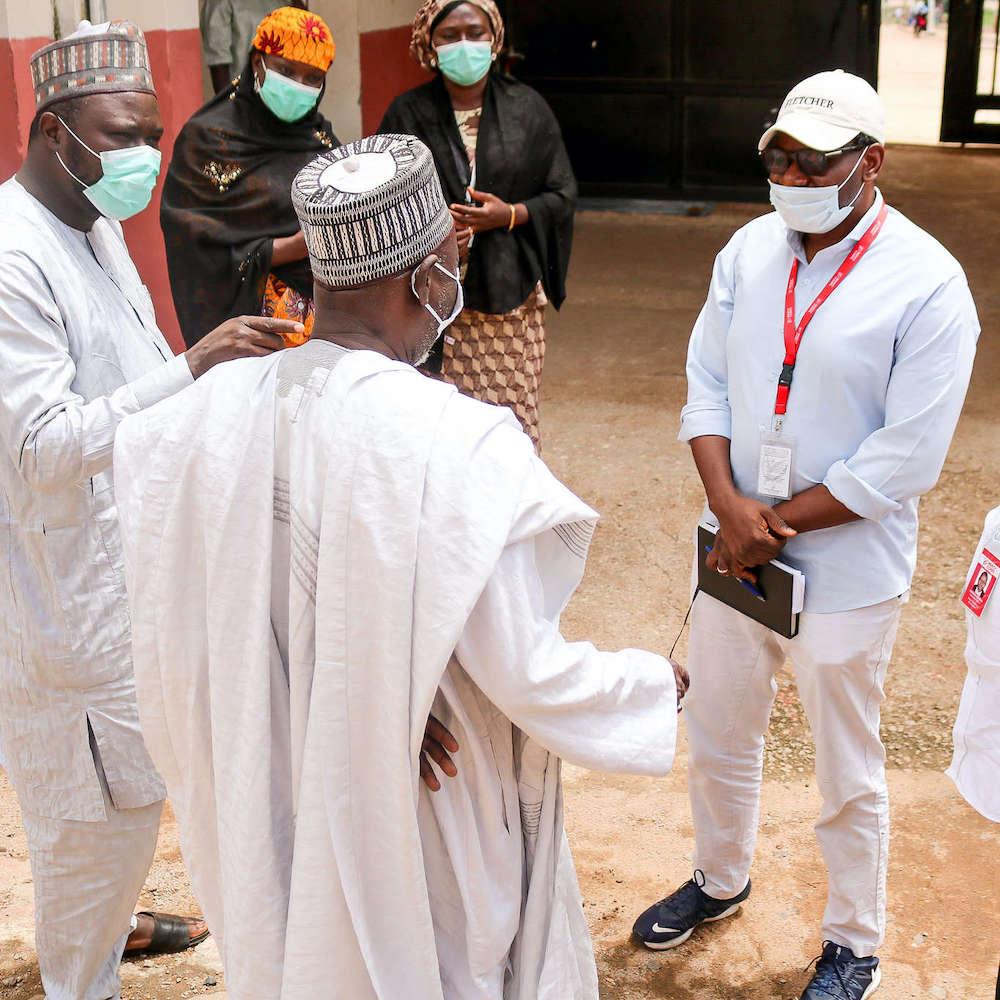
(Image: In August 2020, Mercy Corps launched the Gaskiya program — named for the word “truth” in the Hausa language — to understand how rumors and misinformation flow through communities in Nigeria and to test measures to prevent their spread. As part of the program, community leaders, known as Truth Champions, listen and report rumors about COVID-19 in their community.)
As every nation struggles to contain COVID-19, one of the most pressing challenges for governments, public health officials, and humanitarians has been the fact that misinformation about the pandemic seems to spread almost as quickly as the virus itself. In nearly every country, conspiracy theories and false narratives abound, from rumors about the origin of the virus and how it is spread, to false advice about how to treat it.
Such misinformation is dangerous in any context, but particularly so in fragile places dealing with conflict, violence and weak governance, where false narratives are often weaponized against marginalized groups. As the extent of this problem became clear earlier this year, Mercy Corps launched a program that seeks to understand how these rumors spread and empower community leaders to share accurate information that can cut through the noise and counter these waves of falsehoods.
In northeast Nigeria, a region where civilians bear the brunt of a brutal conflict between the military and armed opposition groups, an assessment by a local radio station in May 2020 found that 96 percent of listeners had heard COVID-19 messaging on the station, but a full 45 percent still did not believe the virus was “real or deadly.” Rumors abound, including that the virus cannot survive in the hot climate of northern Nigeria or that it is a test from God. In August, Mercy Corps launched Gaskiya (named for the word “truth” in the Hausa language), a program designed to understand how rumors and misinformation flow through communities here and test measures to prevent their spread.

Because there is so much misinformation out there, our team didn’t think that just providing correct information would be enough. We needed to better understand the rumor landscape — where they were coming from, who was spreading them — before we could figure out how to best counter them. We began with a household survey in nine different communities, designed to gain an understanding of what exactly people were hearing about COVID-19 and where they were hearing it. Then we designed a user-facing rumor tracker that allows citizens to report rumors they hear in their communities via SMS text messages and calls. We recruited 178 “Truth Champions,” representing each of the nine different communities, and trained them on the truth about COVID-19, how to identify rumors, and on how to use the tool itself.
We chose a phone and SMS-based platform because smartphones and apps are not widely used in these areas. When someone calls into the tool to report a rumor, we ask them what the rumor is, where they heard it and from whom. Our partners at Translators without Borders created a dashboard to conduct qualitative analysis of the rumors, analyzing trends in what’s spreading and from where. Meanwhile, after each report, the Truth Champion gets a phone call back with information about how to refute that particular rumor.
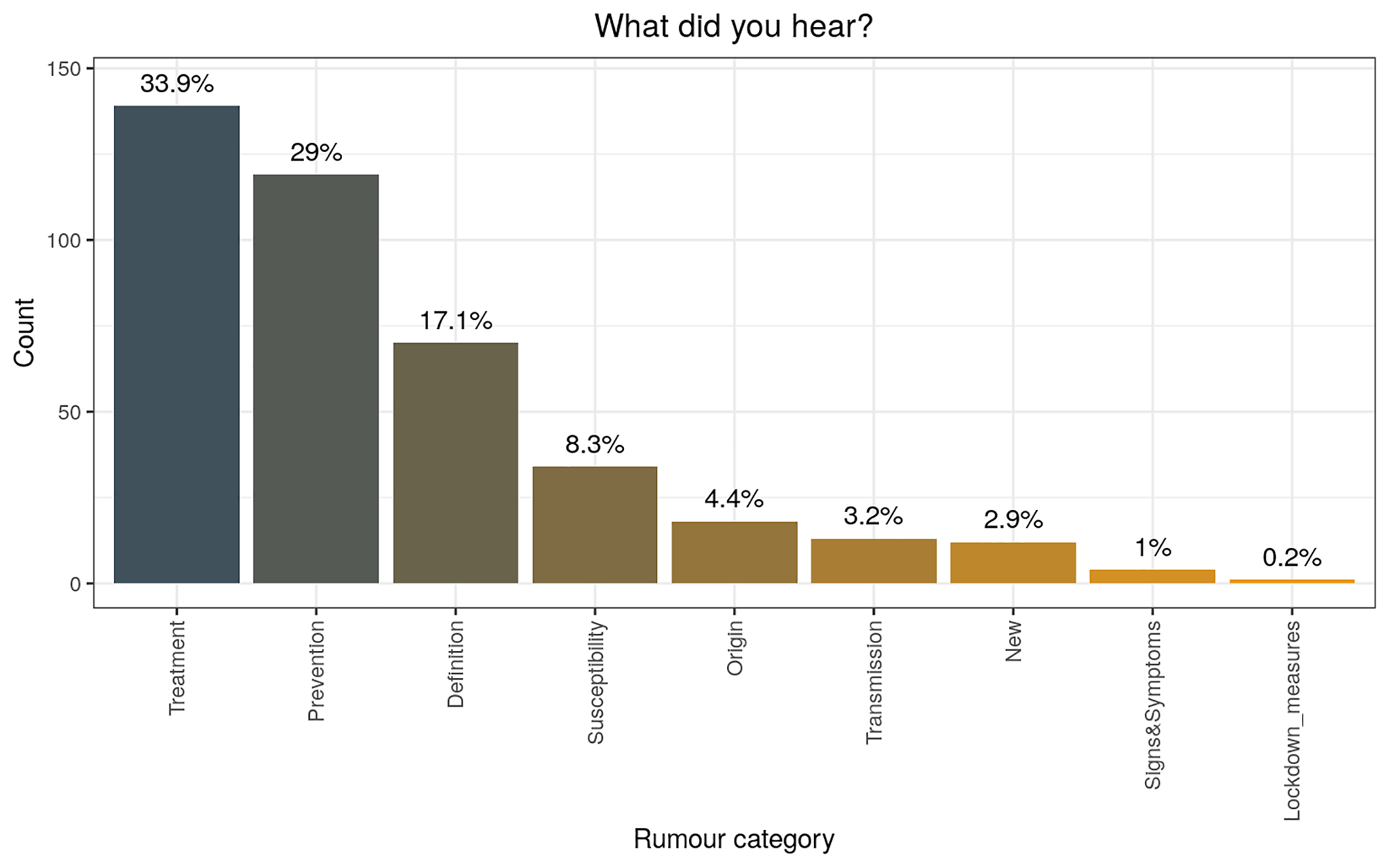
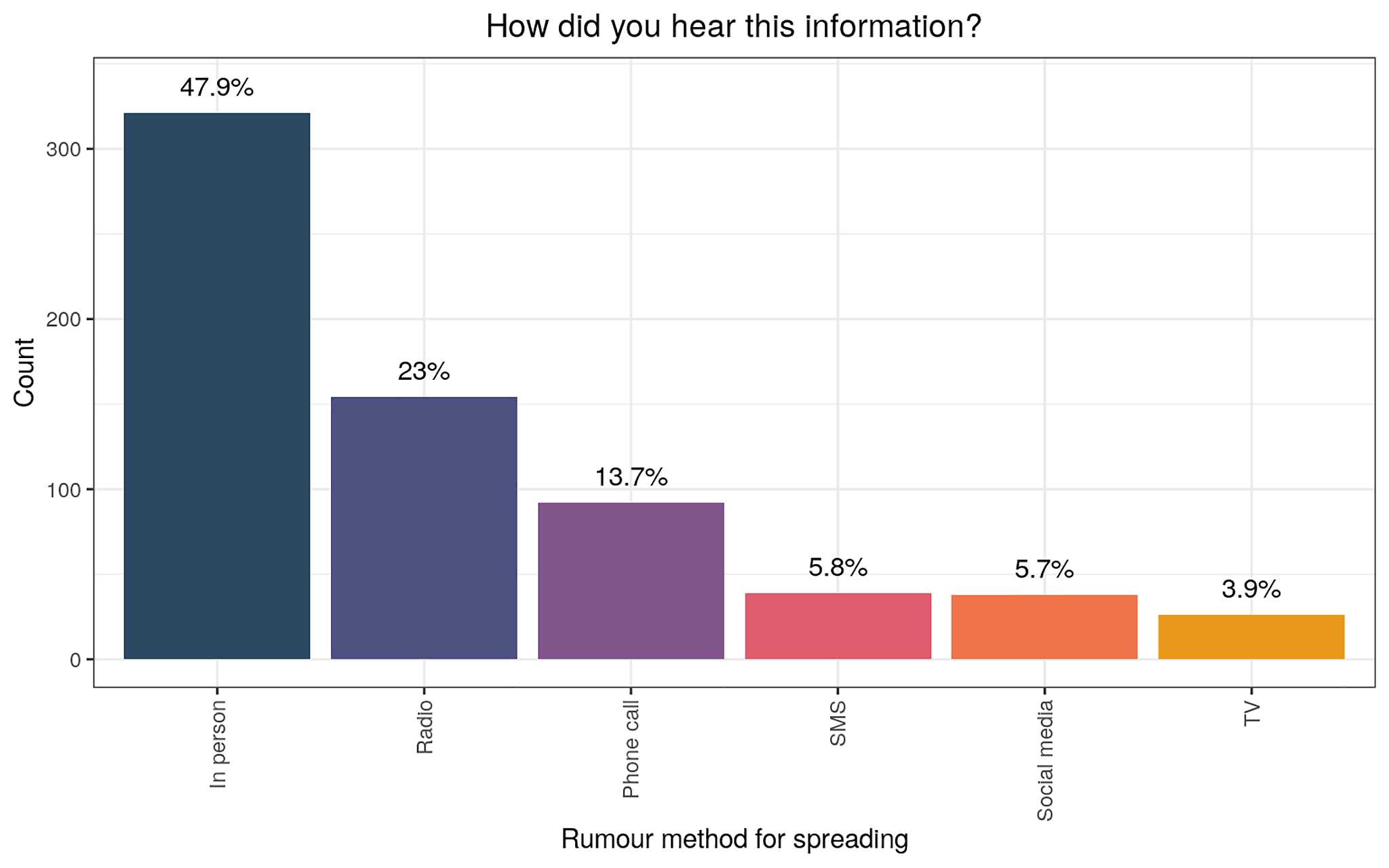
In addition to that immediate feedback loop, perhaps the most crucial element of this project is the last step: bringing that data and analysis back to each community in an effort to find solutions. In each location, we bring the Truth Champions and other community leaders together to discuss what we’ve observed so that we can better understand why certain rumors are resonant in each location, and work with them to identify how we can best combat these rumors.
In our first few weeks since launching Gaskiya, we’ve already seen a wide range of rumors, including that the virus doesn’t exist at all. Some suggest a variety of unproven home remedies, while others heard from religious leaders that the virus could be fought off with greater faith. These are the kinds of rumors and misinformation about COVID-19 that we’ve seen, with varying details, all over the world. The key is figuring out how to gain trust and combat misinformation in each local context.
We know from our experience in fragile places around the globe that the most effective solutions come from the local community and those experiencing the challenges firsthand. So while Gaskiya relies on technology to operate, it really is about listening to people. The technology doesn’t solve the problem, but it does give us a path to finding human-centered solutions for each community.
In recent years there’s been a growing emphasis in the humanitarian community around the belief that access to information is a human right. Initiatives like Signpost (a Mercy Corps collaboration with the International Rescue Committee), Internews, and NetHope are all built on the idea that for many vulnerable people, access to information can often be a life-or-death issue. The rapid spread of misinformation during the pandemic has highlighted that people need not only access to information, but also the resources to interpret, analyze and respond to that information.
As the world looks toward the successful global rollout of COVID-19 vaccines, community engagement and trust-building will be critical. Misinformation about the vaccine is already circulating in the countries where we work, before vaccines have even arrived. One of the biggest hurdles will be convincing people that vaccines and those providing them can be trusted. Winning this trust and tackling the misinformation that creates vaccine hesitancy will require significant funding and a herculean and coordinated effort from governments, public health experts and humanitarian groups.
To do that, we need to meet people where they are, digitally speaking. The tech we use will vary by context, and any initiative needs to take the reality of the local digital ecosystem into account. In northeast Nigeria, that means using phone and SMS technology. In another setting it might be Facebook or WhatsApp. And notably, tech alone isn’t the solution. But when used smartly, the right tech allows us to effectively listen to people and find out exactly what they need.
This article series is sponsored by Cisco and produced by the TriplePundit editorial team.
Image credit: Mercy Corps
Plastic Bag Bans and Mandatory Face Masks: Another Battleground for U.S. Retailers


Plastic bag bans have been slow to take hold in the U.S., and the COVID-19 pandemic created additional complications. Nevertheless, momentum is building again, and leading retailers have an opportunity to get out in front of the national conversation as advocates. However, they had better act fast, before shopping bags become the next target for politically charged conspiracy theories leading to verbal and physical attacks on frontline retail workers.
COVID-19 slows, but does not stop, momentum toward plastic bag bans
Prior to the COVID-19 outbreak, the only two statewide plastic bag bans in the U.S. were imposed in California in 2014 and in Hawaii between 2011 and 2015. Washington, D.C. was also an early adopter, having passed a ban in 2009.
Momentum for change finally took hold in 2019 when six states — Connecticut, Delaware, Maine, New York, Oregon and Vermont — all passed plastic bag bans. A seventh state, New Jersey, signed a ban into law just last month, bringing the total of state-based bans to nine.
At first, the pandemic appeared to throw a lifeline to plastic bag stakeholders. Consumers became more inclined to accept disposable plastic bags as a means of preventing the spread of the virus, a sentiment encouraged by industry stakeholders.
So far, however, the available evidence does not support single-use plastic shopping bags as an effective part of the COVID-19 prevention toolkit. In fact, it appears that the virus may remain active for longer periods on plastic surfaces compared to other materials.
A patchwork of state laws takes shape
If plastic bag industry stakeholders hoped for an opportunity to re-argue their case in the public square, it seems the opportunity has slipped through their fingers.
One representative example is Boston, which temporarily suspended its municipal ban on plastic bags last March only to re-implement it in October.
The National Conference of State Legislatures recently took stock of state and local legislation on plastic bags and noted that state-based efforts to manage plastic bag waste date back at least as far as 1991, mainly through fees, public education efforts and recycling improvements.
During the 2019 legislative cycle, plastic bag stakeholders did win rollbacks or preemptions in some cases. However, among the almost 100 pieces of plastic bag legislation introduced in that year, the trend favored more regulation, not less. The result is now a patchwork of state-based regulations taking effect within the next two years. Almost all of the new activity is concentrated in the northeastern U.S., with Connecticut, Delaware, New Jersey and New York all joining Maine.
The momentum for plastic bag bans also appears to be drifting down to the greater D.C. region. A new bag ban almost passed the Maryland legislature in 2020, which could set the stage for eventual success.
Another battleground for U.S. retailers
The adoption of plastic bag bans among northeast states closely mirrors the Democratic political identity of the region. A similar situation has occurred on the west coast, within the blue-identified states of California and Oregon. That entwining of political identity and shopping bags is bound to complicate matters for regional and national retail chains, potentially exposing their frontline employees to the same kind of verbal and physical abuse that has occurred over face masks during the COVID-19 pandemic.
The failure to establish a firm federal policy on public safety has transformed the simple act of wearing a protective face mask into a politically charged platform for emotional outbursts and self-aggrandizing claims for personal freedom at the expense of public health.
To protect their employees and customers, leading retailers have been forced to take the initiative on face masks, with or without the support of governors in their home states.
Unfortunately, the damage has already been done. Even as COVID-19 continues to kill thousands of Americans every day, millions of other Americans cling to the belief that their personal opinion on face masks overrides any sense of responsibility to protect human life and health.
Adding to the problem, mask protesters have been radicalized and re-energized in the aftermath of the Nov. 3 election, joining in a toxic stew of personal grievance with self-appointed “militia,” white supremacists and proponents of the QAnon conspiracy theory.
Outgoing President Donald Trump has stirred the emotional pot to his own advantage ever since losing his chance at a second term in office, all but guaranteeing that mass hysteria will continue to dominate the public conversation for years to come, whether the topic is a lethal virus or a simple shopping bag.
Leading retailers hoping for a return to normalcy after President-elect Joe Biden takes office will need to stop hoping and start being proactive. The movement to ban plastic bags is a benefit for retailers seeking to decarbonize their supply chains, but it will remain out of reach if the issue is politicized beyond its current coastal enclaves.
Advocating for a return to reason, science and civic responsibility is not just a job for government. It is an all-hands-on-deck drill and a prerequisite for progress.
Image credit: Leon Kaye
How the EU Plastic Waste Ban Could Turn the U.S. into a Next-Generation Recycling Destination
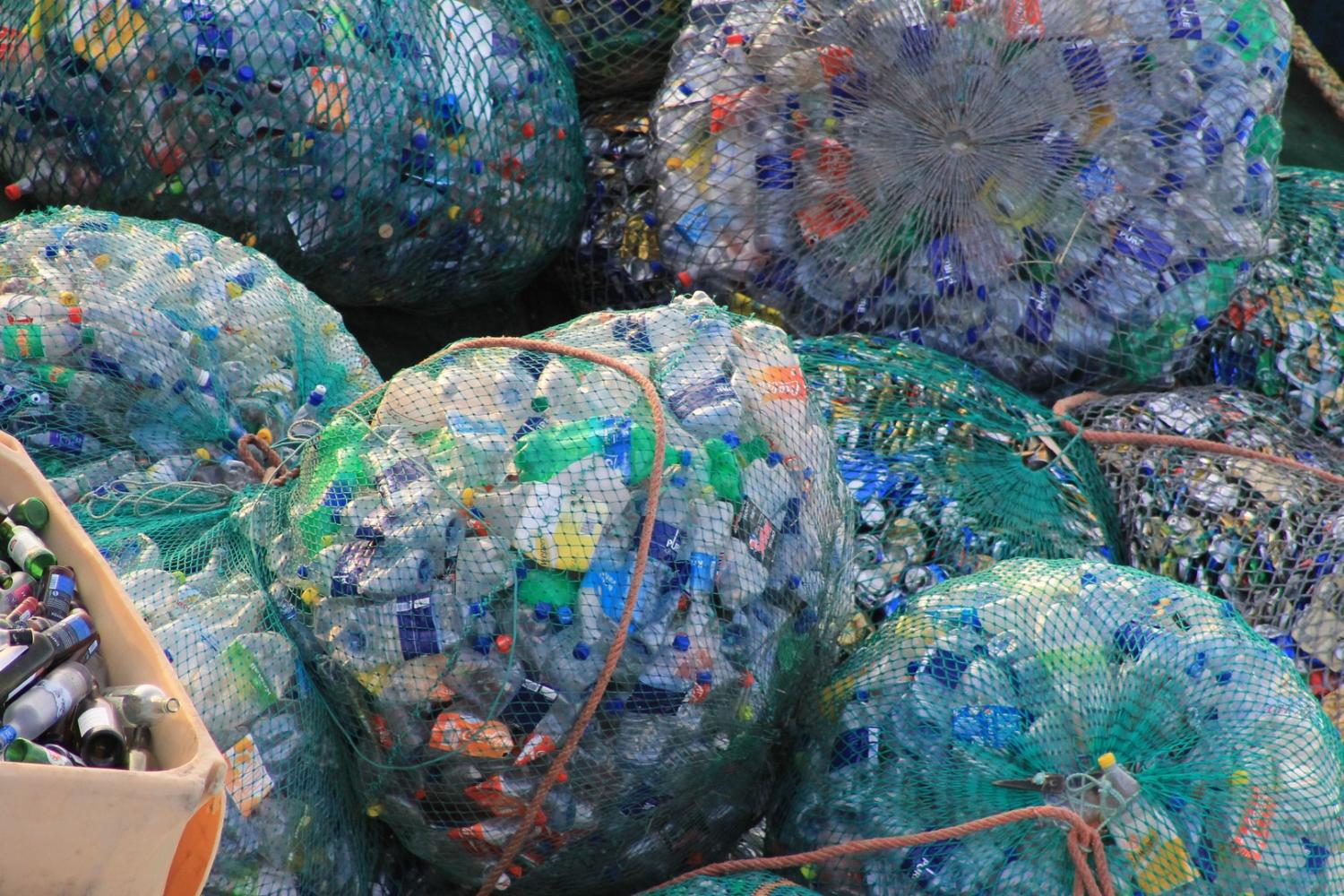
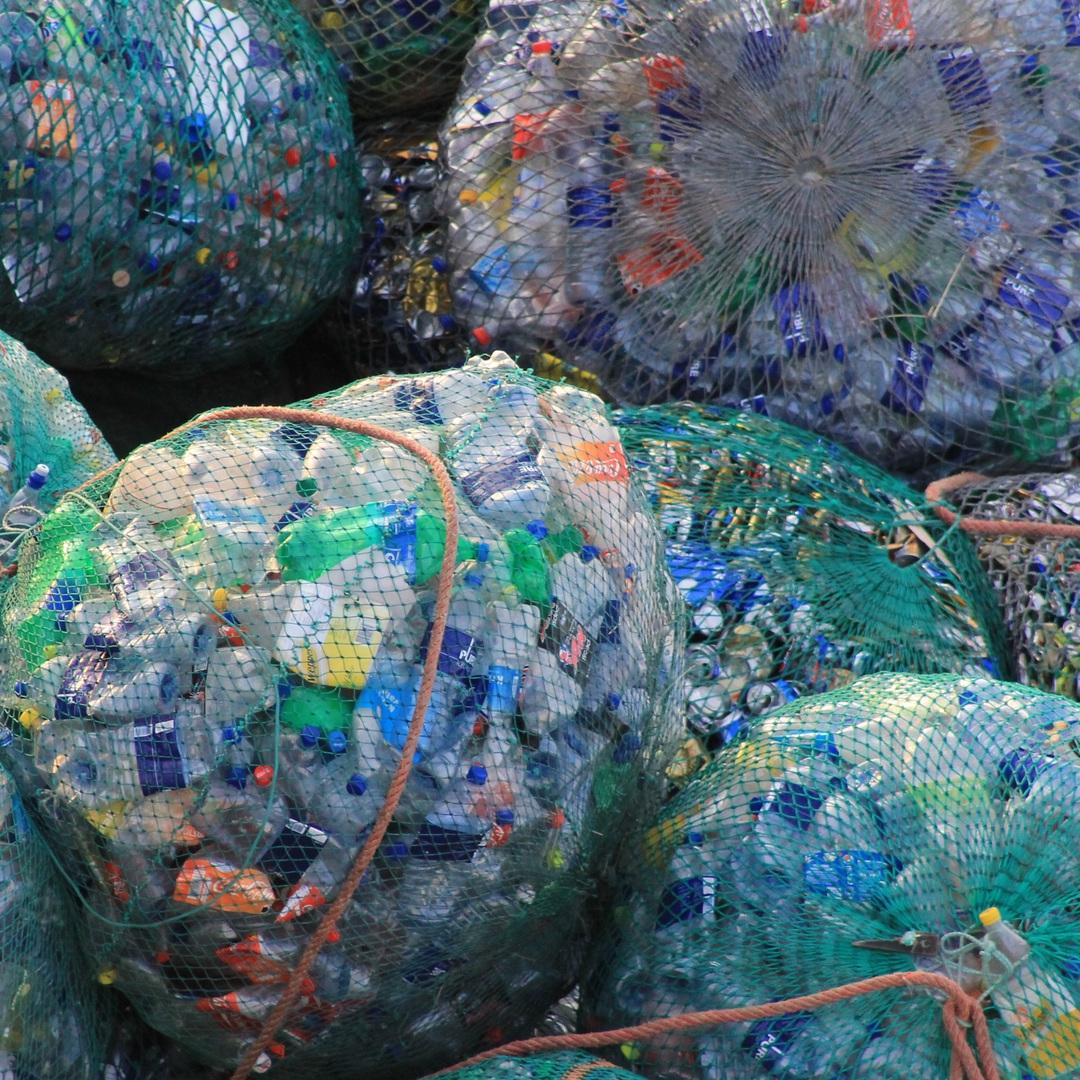
Next-generation plastic recycling technologies could breathe new life into the U.S. petrochemical industry, and not a moment too soon. The global recycling market has been cracking under the strain of plastic waste, and export rules are tightening. In the latest development, the European Union announced a new export ban at the end of last month, one that could have an impact on U.S. markets.
The global plastic recycling market is just not up to the job
China touched off a crisis in the global recycling market in 2018 when it banned certain types of waste imports. The move exposed glaring shortfalls in the traditional approach to recycling.
In conventional recycling, the onus is on global markets to propel the demand for products made with recycled plastic. That has succeeded to some extent, but it is clearly not a permanent solution to plastic waste.
Here in the U.S., plastic recycling rates are generally low to begin with, and evidence is mounting that sending waste overseas simply shifts the burden from developed economies onto others that are ill-equipped to handle mountains of waste. The result is that waste ostensibly intended for recycling is mishandled, ends up in landfills or incinerators, or is dumped illegally.
A sea change for plastic waste
China’s ban touched off a wave of activity around the issue of plastic waste by other nations and international organizations.
Although the United Nations estimates that only 2 percent of plastic waste is exported, the ripple effect was significant. Without the benefit of China’s more sophisticated recycling infrastructure, the waste stream has surged into countries that are not necessarily equipped to handle it.
Major new markets have included Thailand, Malaysia, Vietnam, India, Turkey, and several members of the international Organization for Economic Cooperation and Development (OECD), including the U.S., Korea, Canada and members of the EU.
One significant development occurred in November when OECD announced an agreement on new rules for exporting certain types of plastic waste. The new agreement only covers the category of hazardous plastic waste intended for recycling, as an update to the 1989 Basel Convention covering the shipping of hazardous waste. However, it is a step in the right direction.
Under the updated rules, all 37 OECD member countries that export hazardous plastic waste for recycling must now receive prior consent from the destination country.
The OECD timeline also calls for members to review the rules for non-hazardous plastic waste in 2024. In the meantime, organizations fighting this surge of waste can expect greater access to information from OECD members.
As part of the new agreement, the members have committed to publicizing lists of their regulations for exporting non-hazardous plastic waste. That includes single-source or “pure” polymer waste where little or no by-products are left for disposal, as well as mixed plastic waste that is more challenging to process.
EU members take a stand on plastic waste
Another significant step occurred on Dec. 22 when the European Commission announced new regulations for importing and exporting plastic waste.
The EU's new export regulations have an environmental justice angle in that they will help prevent the indiscriminate export of unsorted plastic waste to countries that may not be equipped to recycle it.
Under the new rules, EU countries will no longer export many types of plastic waste to non-OECD members. The only permitted waste is “clean plastic” intended for recycling. The Commission also announced stricter regulations for exporting plastic waste to OECD members outside of the EU, and for importing waste into the EU.
In a statement announcing the new rules, Virginijus Sinkevičius, EU Commissioner for environment, oceans and fisheries, made a strong case for regulation of the global plastics market.
“These new rules send a clear message that in the EU we are taking responsibility for the waste we generate. The export of plastic waste will only be allowed under very strict conditions,” he explained. “The export of unsorted plastic waste to non-OECD countries will be completely banned. This is an important milestone in fighting plastic pollution, transitioning to a circular economy, and achieving the aims of the European Green Deal.”
Meanwhile, over here in the U.S.
The ripple effect of the new EU regulations is all but certain to affect recycling markets in the U.S.
Plastic scrap exported from the U.S. dipped sharply after the China ban, and the COVID-19 crisis has placed new burdens on these waste streams. Domestically, the U.S. already makes an excessive contribution to plastic pollution along its coasts. The risk of bursting at the seams will become greater without a reliable export market — unless domestic recyclers step up their efforts.
Recycling is clearly not the only solution to plastic waste over the long run, but until the global economy de-plasticizes, it can make a stronger imprint on the plastic pollution problem.
New, next-generation forms of recycling could help make a difference. Among the solutions to emerge are bio-based, microbial and molecular-level technologies that break plastic down into chemical building blocks, rather than simply shredding or melting it. Another emerging approach involves pulverizing plastic waste to produce hydrogen gas and carbon nanotubes.
The aim is to develop more efficient recycling streams while also producing a high-performance material that is equal to, if not better than, virgin plastic.
All of this could work to the advantage of petrochemical stakeholders in the U.S. If they were so inclined, they could pivot their know-how, infrastructure, and supply chains into next-generation recycling technology rather than relying on raw natural gas and petroleum for feedstock.
Though the U.S. is most closely associated with plastic waste exports, it actually does import a significant amount of plastic. With new technologies in hand, the domestic petrochemical industry could build on that foundation to increase the role of the U.S. in the global market for plastic recycling, giving the country a leading role in the global marketplace.
They had better act fast. COVID-19 pandemic or not, the long-term market for virgin plastic already shows signs of weakening as the movement for reduced packaging heats up among leading consumer goods manufacturers. The package-free movement is also gathering steam, and the next generation of bio-based plastics offers yet another challenge to the oil and gas supply chain.
Image credit: PxHere
2020 Was an Awful Year for Restaurants, But Reversing Tariffs Could Help


More than 110,000 U.S. restaurants closed over the past year — and as shutdowns resumed, well over 10,000 of them shuttered in the last three months of 2020 alone. Across the country, the heartbreak continues. Many of these were beloved local institutions, and some had made investments in tents and other equipment to adapt to the new reality of doing business during a pandemic, ultimately to close their doors anyway.
And as many restaurants and bars were shut down to counter the COVID-19 surge, few policies were put in place to help small business owners and their employees get through this crisis. For owners, the only flaw in their business decisions was a failure to do the impossible: develop a completely pandemic-proof plan.
Nevertheless, even though this “dark winter” makes us wonder if there’s any light at the end of this tunnel, leading restaurateurs say one signature can give the restaurant industry a much-needed lift.
The (partial) solution? Start with the 25 percent tariffs on many European food and alcohol products, which the Donald Trump administration imposed months before the pandemic in October of 2019.
At first glance, those products may seem like a small part of U.S. restaurant and bar menus. But consider the list of products, which includes cheese, frozen fruit, meats such as ham, olives, whisky and wine. Then add the fact that restaurants using these products must make the stark choice to either pass on the costs to their customers or simply absorb it themselves — the latter of which is non-starter in a sector with very thin profit margins.
“Frustratingly, restaurants have been caught in the crossfire of a much larger trade war. The goal of the tariffs was to hit back at the European Union in a long-running feud between U.S. aircraft giant Boeing and its E.U.-based rival Airbus,” restauranteurs Kwame Onwuachi and Alice Waters argued in a recent Washington Post op-ed. “Spanish wine may have nothing to do with Boeing, but the Trump administration thought it could bring Europe to its knees over aircraft subsidies by taxing food exports.”
Any appeals the restaurant industry has made to the White House have fallen on deaf ears. In fact, the outgoing administration is lengthening the list of products subject to these tariffs as part of its long dispute with the European Union over subsidies for its aviation industry.
Such a move may score political points in some circles, but it’s a gut punch to small businesses on both sides of the pond. One business association pointed out how a 25 percent increase in cost can hurt countless small businesses, while Europe’s aircraft sector — the core of this ongoing spit-spat — was slapped with only a 10 percent tariff. Another group suggested at least 13,000 jobs disappeared as the tariffs were first imposed, hardly a small number at a time when jobs are scarce.
The effects not only hit restaurants and their employees. Yet another restaurateur noted that smaller food distribution companies could suffer as small, family-owned restaurants would not benefit from purchasing from larger suppliers that only offer discounted prices to large restaurant chains.
It will take a long time before the 2 million-plus jobs that the restaurant sector lost during the past year will ever come back. Nevertheless, Onwuachi and Waters say that, with a “stroke of a pen,” President-elect Joe Biden could reverse those tariffs and give restaurants and bars a much-needed break.
One coalition is keen on amplifying that call to action. The Coalition to Stop Restaurant Tariffs, which just emerged last month, is urging the incoming White House to nix those tariffs soon — and keep small businesses out of the line of fire in what has been a 16-year-long tussle between the U.S. and European Union.
Image credit: Jez Timms/Unsplash
10 Brands That Embraced the Circular Economy in 2020
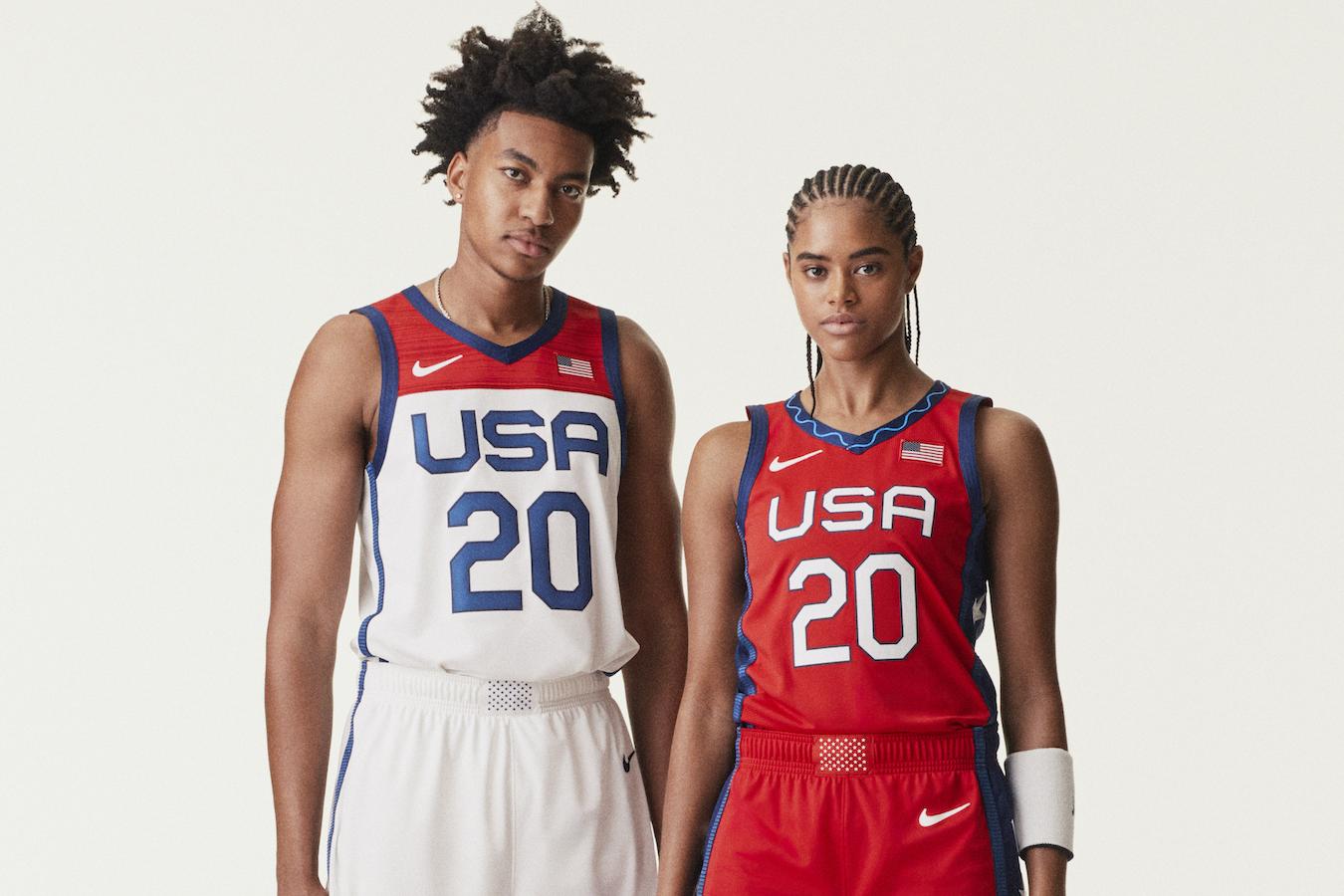
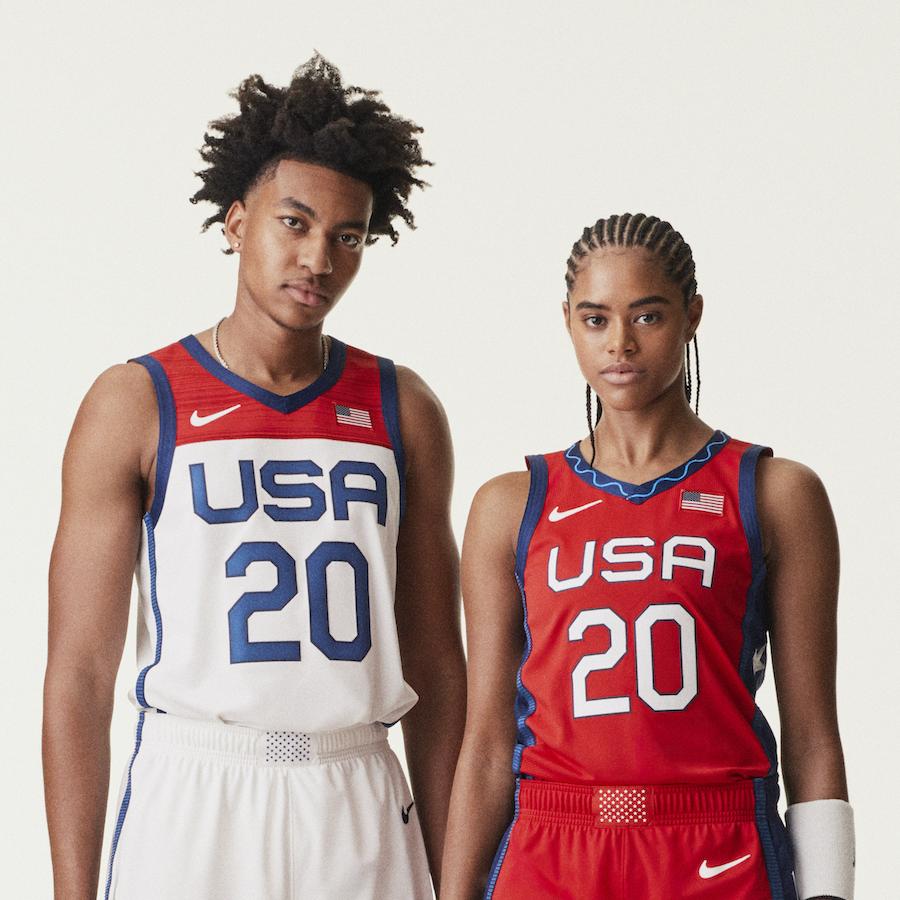
Even as the coronavirus pandemic challenged companies to do more to support their communities while bracing against economic upheaval, many refused to let their sustainability ambitions fall by the wayside. Case in point: These 10 brands moved a step closer to closed-loop operations this year — and their example helps to pave the way for a truly circular economy in which nothing becomes waste.
Nike rides the circular economy all the way to the Olympics
Nike launched a host of circular products this year, including a recycled-content version of the Converse Chuck Taylor All-Star and an "exploratory footwear collection" made from factory and post-consumer waste. But the line of competition apparel for the Tokyo Olympics (pictured above) was arguably crown jewel in the brand's 2020 foray into the circular economy.
Although the Tokyo games were postponed due to the coronavirus pandemic, athletes representing the U.S., France and Brazil will compete in Nike uniforms made with 100 percent recycled polyester when teams take the field in 2021, proving that circularity doesn't mean sacrificing performance.
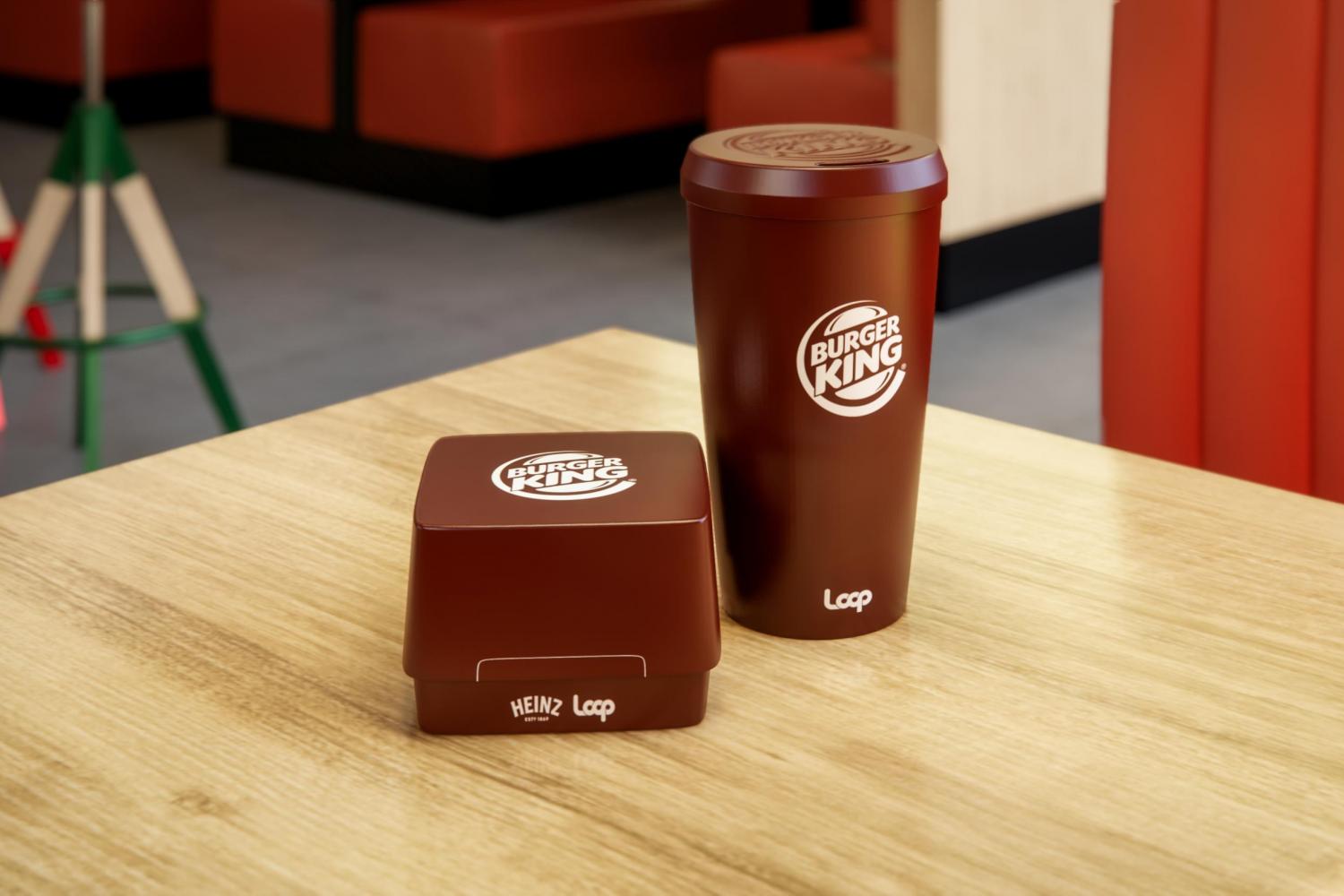
Burger King tests reusable packaging
The fast-food chain made headlines in October with news it plans to test reusable packaging in partnership with TerraCycle’s Loop initiative. Beginning next year, Burger King will trial reusable containers for sandwiches and drinks at select restaurants in New York, Portland, and Tokyo.
Customers who request reusable packaging will be charged a deposit, which is returned when cups and boxes are returned to in-restaurant collection points, where they're sanitized and put back into use.
The trial is part of Burger King’s goal to source all packaging from renewable, recyclable, or certified sources by 2025 and follows rival chain McDonald’s move to test reusable cups in the United Kingdom.
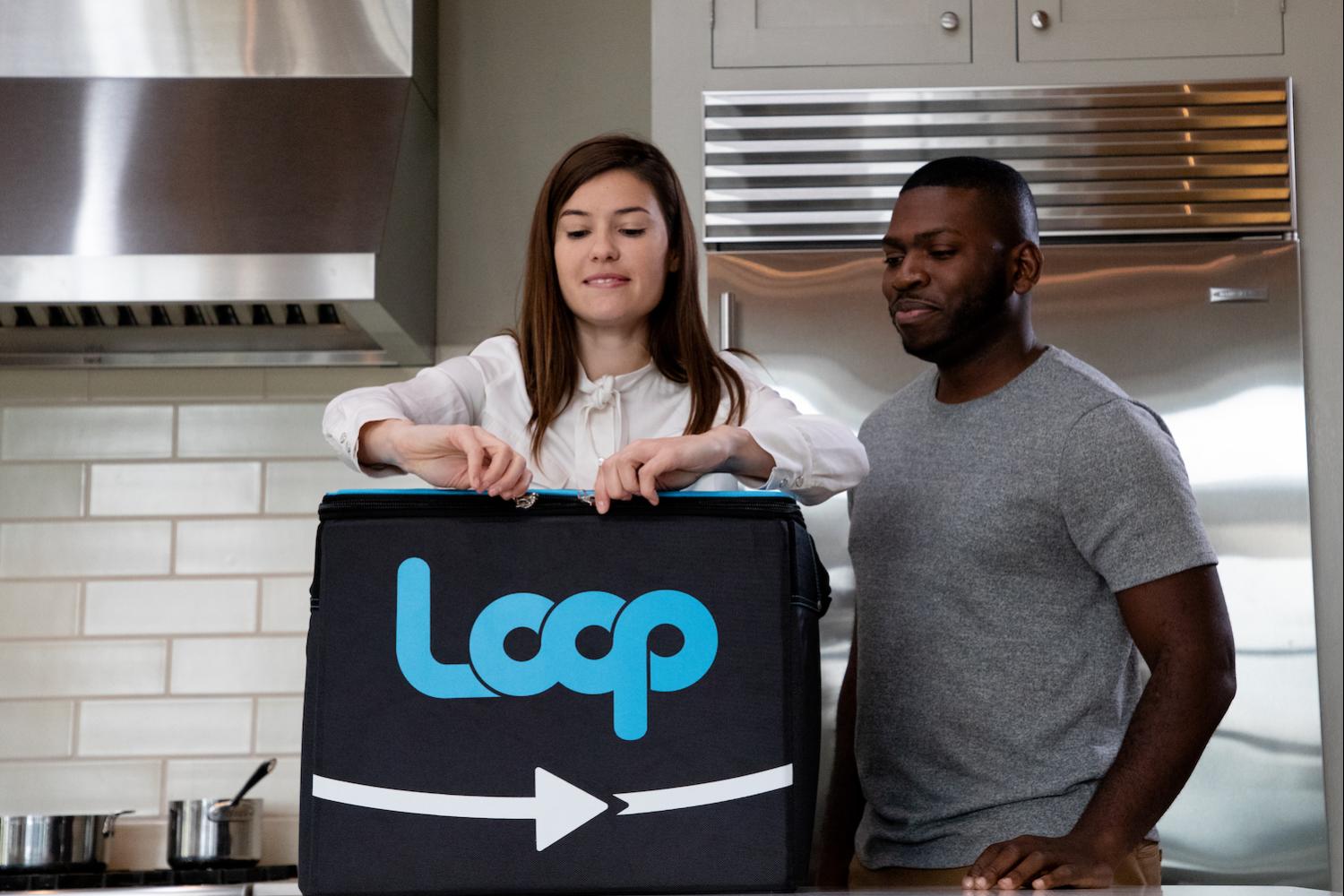
Loop expands across the continental U.S.
Reusable packaging platform Loop launched in 2019, and its model of delivering mainstream products in reusable packaging has grown in popularity since then. Even as people grew wary of reusable items due to the coronavirus pandemic, Loop saw its sales surge in 2020 — and in September, its service rolled out to all 48 contiguous U.S. states.
"Consumers are understandably anxious in this new world, but they still want to make purposeful purchases," Heather Crawford, Loop’s global VP of marketing and e-commerce, told TriplePundit in May. "If you can meet shoppers where they are — which is, right now, at home and online — and also establish trust in the safety and hygiene of the reuse system, even in a difficult situation, what we're seeing is that consumers still really embrace it."
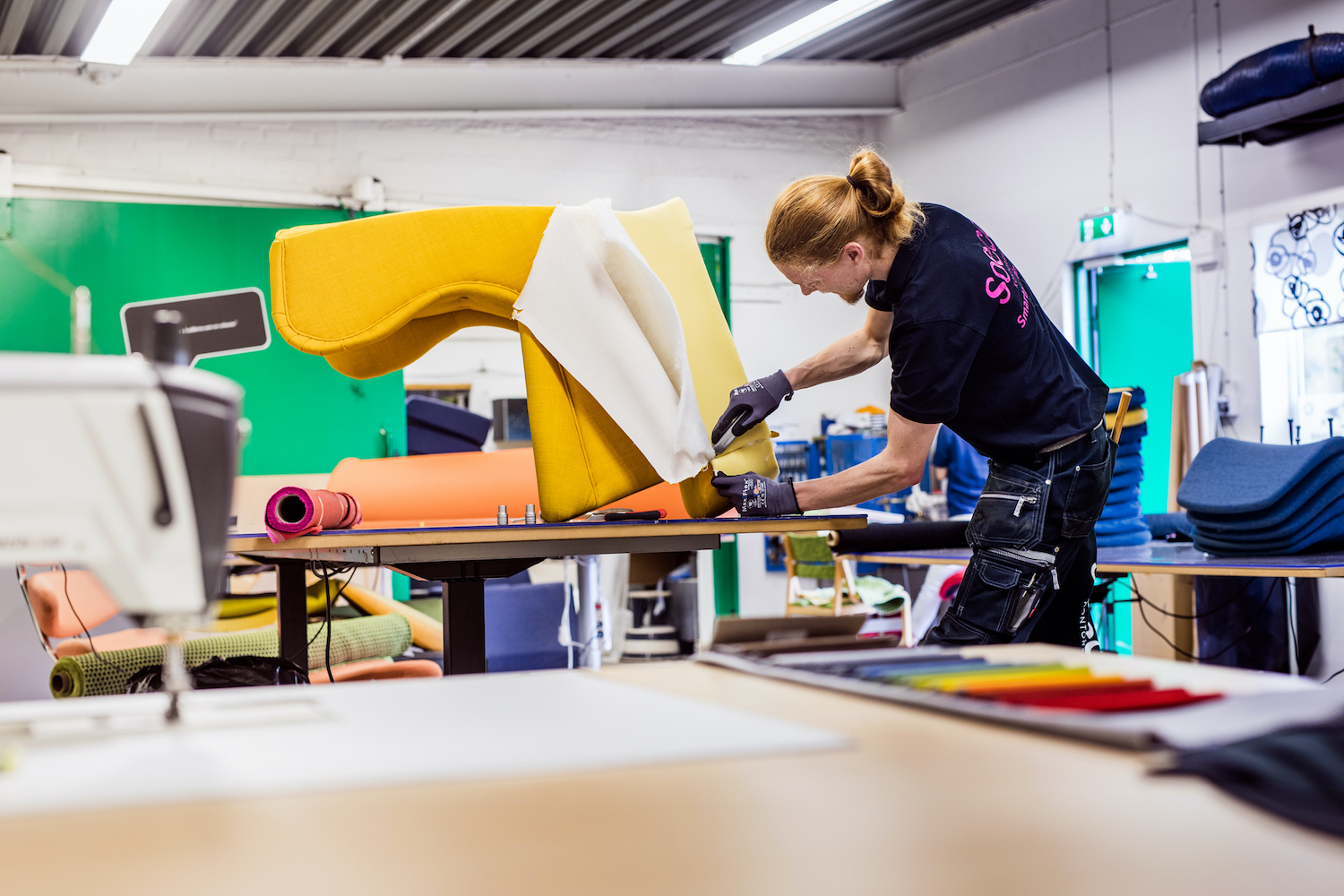
Ikea rolls out buyback program for used furniture
Ikea kicked off a large-scale furniture buyback program on Black Friday last month. Twenty-seven countries, including Germany, Australia, Canada and Japan, will be part of the project Ikea is calling “Buy Back.” The United States will not initially participate, though U.S. stores may join in the future, a spokeswoman said.
Where available, customers can receive up to 50 percent of an item’s original price in the form of a store voucher. Items not resold will be recycled or donated to local community projects, according to the company.

Adidas unveils fully recyclable sneaker
This fall, Adidas rolled out a fully recyclable version of its Ultraboost running shoe, made from a single material without glue. The shoes were raffled off to interested consumers in October, but Adidas plans to launch a successor in a larger volume in the spring of next year.
Last year the footwear giant also sold 15 million pairs of sneakers made with plastic collected from beaches and coastlines in partnership with Parley for the Oceans, with plans to up that figure to 17 million in 2021.

Puma uses plastic collected by self-employed garbage pickers
Puma's spring collection was developed in partnership with the First Mile Coalition, a network of self-employed refuse collectors in Taiwan, Honduras and Haiti, who remove plastic waste from ecosystems and sell it to make a living. Following in the footsteps of other major brands like Timberland and HP, Puma's foray into so-called "social plastic" helps the company utilize more sustainable materials while creating income opportunities for people in regions with no formal waste collection.
“We hope that whoever buys this collection feels good about this purchase, not just in terms of choosing something that uses sustainable material, but knowing that those entrepreneurs in the first mile are being connected to this product, because it’s their material going into it,” Kelsey Halling, head of partnerships for First Mile, said of the collection in a statement.
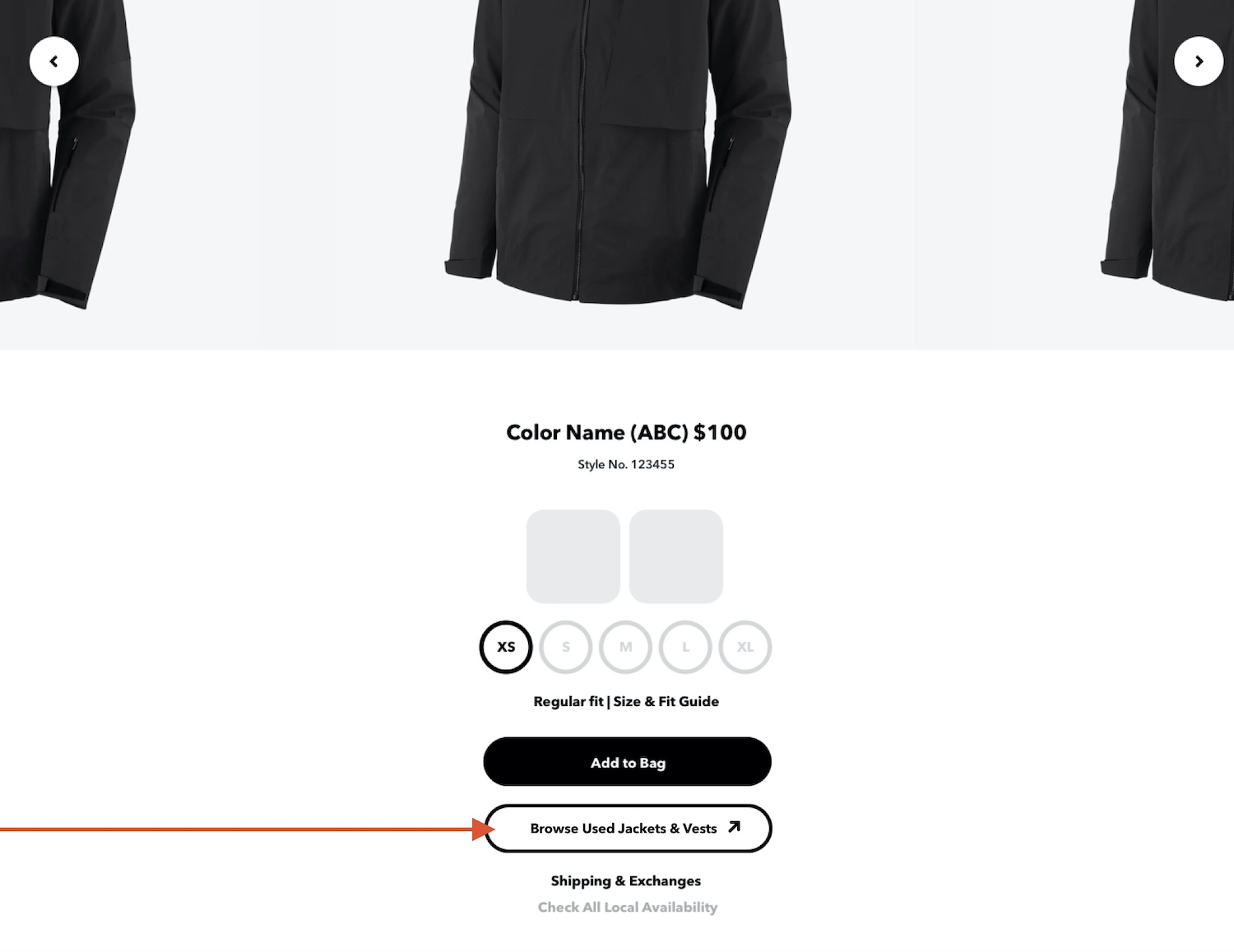
Patagonia doubles down on reuse and repair
Patagonia is a longstanding proponent of repair, reuse and conscious consumption. The cult favorite brand started selling gently used outdoor gear and clothing for men, women and children in its online Worn Wear shop back in 2017, and last year it launched the ReCrafted collection made from goods deemed too damaged to be sold in the secondhand store.
Patagonia expanded its foray into the circular economy this year by creating repair guides in partnership with iFixit to help customers repair their worn-in gear themselves. And just before Black Friday, the brand added an option to buy used through Worn Wear next to every new product listed online, making it the first company to give customers an easy way to purchase a used alternative when shopping for new products.

H&M tests creative materials, including ... food waste?
H&M aims to source exclusively sustainable materials by 2030 and become "climate positive" by 2040 — and the fast-fashion giant's fall/winter 2020 collection may bring it one step closer. Featuring curious biodegradable materials, including fiber derived from wood pulp and food waste, the line doesn't skimp on circularity or style.
“For A/W20, we really wanted to be trailblazers – pushing the limits of creativity and sustainable fashion – by focusing on waste,” H&M creative advisor Ann-Sofie Johansson, said in a statement. “Working with this kind of transformation and being able to speak to our customers through beauty, we hope that waste can be part of the future of sustainable fashion.”

HP rolls out "the world’s most sustainable PC portfolio"
Over the past year, TriplePundit has tracked HP’s use of plastic recovered from ecosystems and waterways before it can reach the ocean. From its June 2019 release of the world's first computer monitor made with ocean-bound plastics to the first PC built with these materials announced three months later, the tech giant has steadily increased its use of recovered plastics while raising awareness of ocean health.
In May of this year, the company unveiled what it billed as "the world’s most sustainable PC portfolio," including a new Chromebook made with ocean-bound plastics. An HP representative called the line a "culmination" of the company's work in sustainable product design, but it's just the beginning: HP has pledged to include ocean-bound plastics in all new desktop and laptop computers launched in its Elite and Pro lines.

The North Face creates in-house residency for circular design
Outdoor gear label The North Face was early to the circular economy party, having launched its re-commerce platform in 2018. The North Face Renewed collection includes refurbished clothing that is available for sale at steep discounts compared to buying new. The California-based brand claims to have already diverted more than 200,000 pounds of used clothing from landfills — and this year it expanded the Renewed program to include an in-house design residency.
Rotating groups of The North Face designers will attend bi-annual sessions at the company’s Renewal Workshop in Cascade Locks, Oregon, to learn more about the principles of circularity. They’ll also create custom, one-of-a-kind pieces from garments that were previously thought to be irreparable, which will be available for online auction. The first round went on sale in February.
The U.N. Decade on Ecosystem Restoration: A Necessary Minefield for U.S. Businesses


During the four years of the Donald Trump administration, U.S. business leaders have had to step up and fill a leadership void on climate action and other issues of fundamental public interest. That work must continue under a new administration in order to repair the years of damage and neglect. It will be no less difficult due to the persistence of conspiracy theories partly aided and abetted by the president himself, and one early test of leadership will be how business responds in the upcoming United Nations Decade on Ecosystem Restoration.
The U.N. Decade on Ecosystem Restoration: A powerful branding opportunity
At first glance, supporting the U.N. Decade on Ecosystem Restoration would seem to be a piece of cake for businesses seeking to burnish their green profiles. After all, public support for environmental action is strong, and U.S. businesses have years of experience in preserving butterfly habitats, sponsoring litter cleanups, raising public awareness about environmental issues and, of course, planting trees.
The Decade on Ecosystem Restoration takes efforts like these to the next level, calling for a global, all-hands-on-deck effort by governments, NGOs, and private businesses to preserve and restore ecosystems. The initiative dovetails with the U.N. Sustainable Development Goals for counteracting climate change, protecting and improving the well-being of local populations, and preserving biodiversity.
To amplify and reinforce the effort, the U.N. is encouraging all participants in the Decade to make use of its brand book, complete with a colorful logo, social media cards and messages, and the hashtag #GenerationRestoration. The branding provides businesses with a readymade pathway for lending their support to the effort and identifying themselves globally with the cause of global ecosystem restoration.
A red flag for U.S. businesses
The new U.N. Decade will officially launch on World Environment Day, on June 5, 2021. That leaves U.S. business leaders with plenty of time to familiarize themselves with the U.N. resolution that established the Decade on Ecosystem Restoration, and plan ahead for initiatives and activities that connect with the Sustainable Development Goals.
What could possibly go wrong?
Plenty, if history is any indication. Long before Trump took office, conservative pundits and politicians poisoned a generation of voters against global action through the United Nations, drawing on the emotional tug of thinly veiled anti-Semitism and xenophobia.
One red flag occurred during the Barack Obama administration, when the John Birch Society and other influential conservatives began a full-fledged attack on the U.N. Agenda 21 initiative.
Agenda 21 was adopted as part of the 1992 U.N. summit in Rio de Janeiro, Brazil. It is a non-binding planning document intended to provide guidance for sustainable development efforts. Unfortunately, it gave fodder to conspiracy theorists who raised the specter of communism and the abolition of private property. By 2012 it had become a political hot potato in the U.S., stifling serious debate over a national plan for sustainable development.
A necessary minefield for U.S. businesses
The climate change “hoax” is among a list of conspiracy theories regularly promoted by President Trump before and during his term in office. In his first year, he moved to withdraw the U.S. from the 2015 Paris Agreement on climate change, playing right into conspiracy theories about the U.N.
Those conspiracy theories are bound to endure long after President-elect Joe Biden takes office, along with the voter fraud conspiracy theory, the white supremacist movement, the socialist takeover theory, and the web of fantasy drawn by Qanon believers, among others. The result is that businesses supporting the new U.N. Decade will expose themselves to a hotbed of hysteria fueled by social media and conventional media alike, even leading to the potential for violence.
That makes it all the more important for business leaders to support the U.N. Decade, if not through direct branding then by taking more aggressive action to push back against conspiracy theories about sustainable development and climate action.
Business leaders have already ceded far too much of the public square to crackpots, bad actors and self-interested politicians. They cannot rely on the goodwill of the incoming Biden administration to change hearts and minds on sustainable development.
The COVID-19 pandemic is just the latest example of the potential for lethal consequences on a massive scale when misinformation runs amok. Now is the time for U.S. businesses to take control of the climate debate, stake their brands on truth and science, and fight for a more sustainable future.
Image: James Wainscoat/Unsplash
Supply Chain Partnership Aims to Help Smallholder Farmers Cope With COVID-19
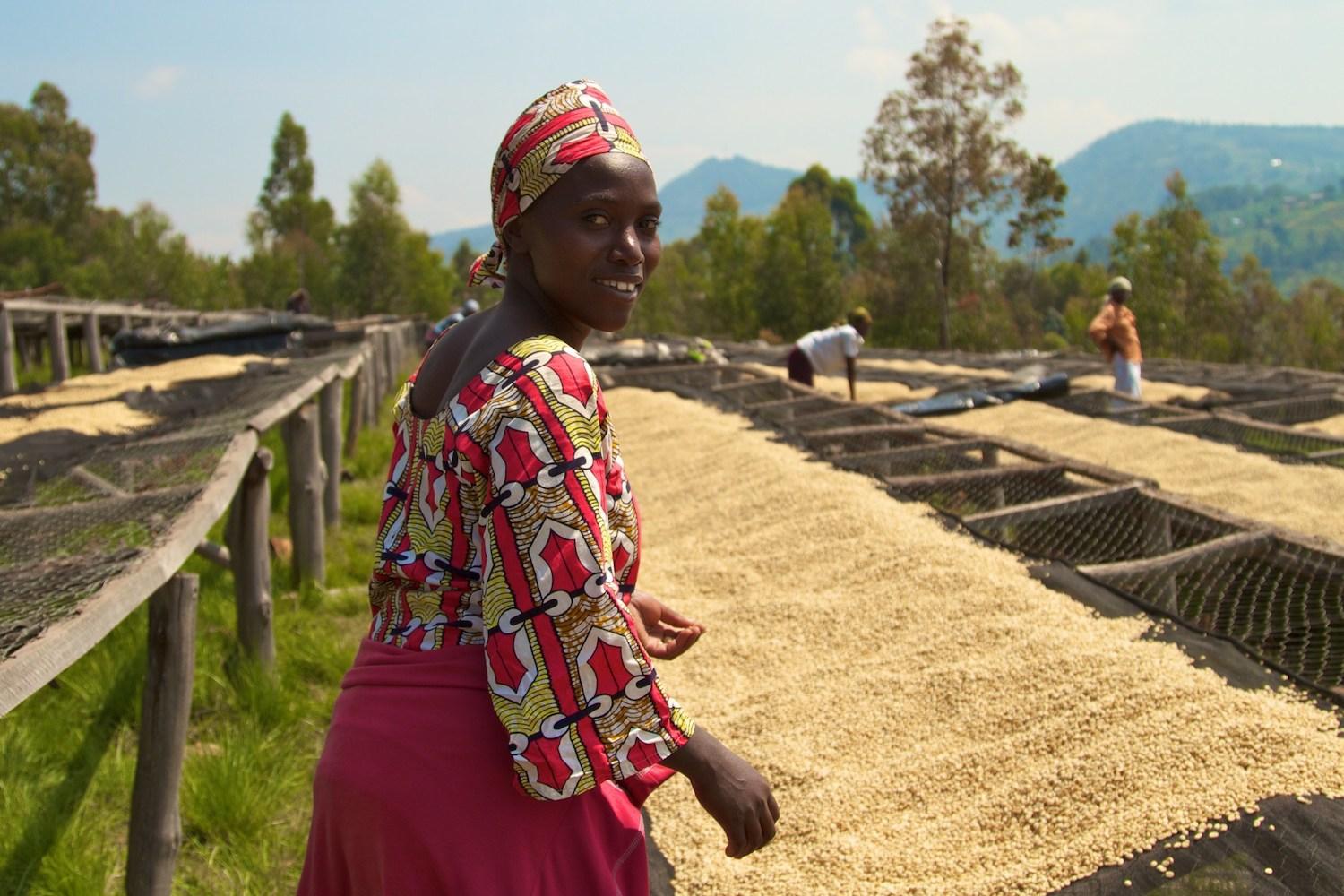
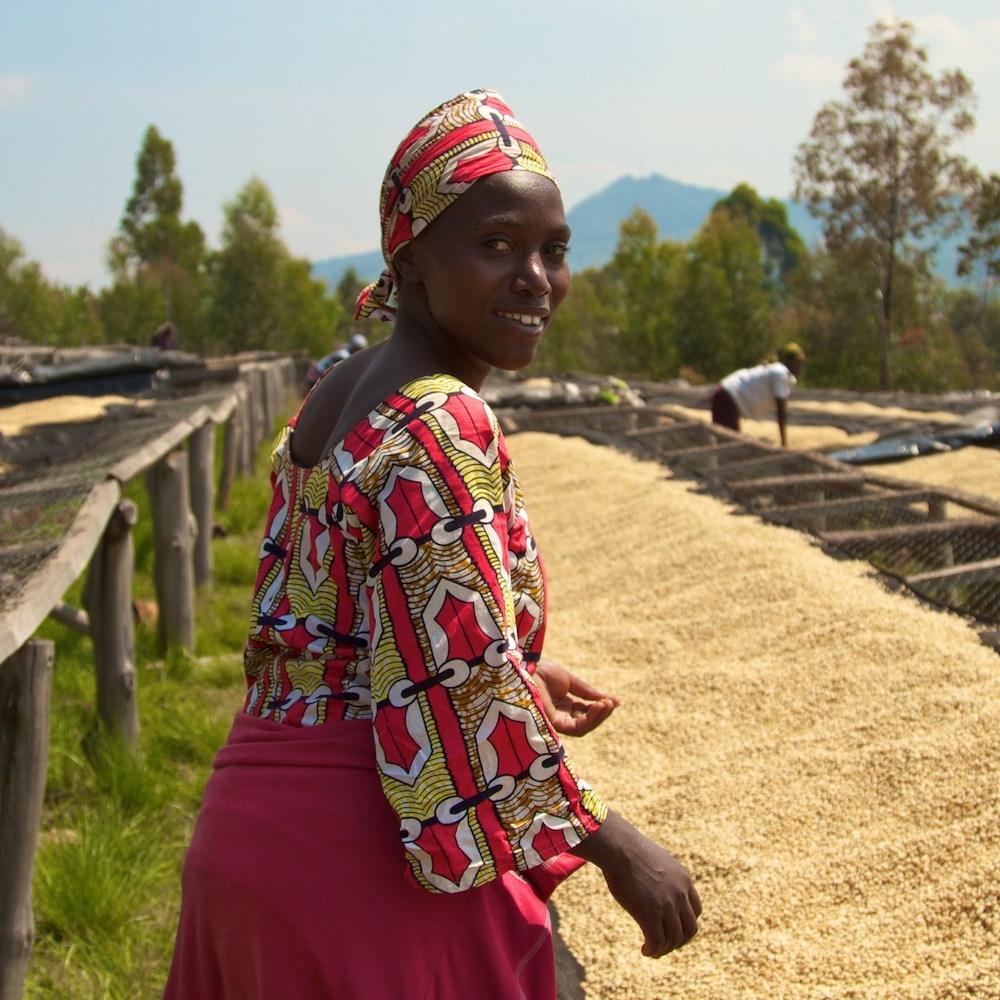
In the early months of the coronavirus pandemic, plenty of press was paid to empty store shelves and disruptions in the global food supply. The impact on smallholder farmers within the agricultural value chain was less widely reported, but arguably even more severe: In a July survey of 2,400 smallholder farmers growing cocoa, coffee, and other crops in Africa and Indonesia, 70 percent reported having less income than usual, and over half said this affected their ability to feed themselves and their families.
As restrictions on the movement of people and goods drove down commodity prices in many parts of the world, farmers were forced to sell their wares for less. Those same restrictions coincided with planting seasons for staple crops in regions including sub-Saharan Africa, resulting in more lost income for farmers. Missed planting periods also carry potentially grave food security concerns in areas like sub-Saharan Africa and Asia, where smallholder farmers grow around 80 percent of the total food supply.
Multinational supply chains also rely on the goods these farmers sell — meaning large food and beverage businesses can play a role in helping farmers cope with the impacts of the pandemic, while shoring up their own commodity supplies against future risk. This sweet spot of mutual benefit is the focus of a supply chain partnership announced earlier this month.
To bolster the global food supply chain, help smallholder farmers
Launched by Root Capital in collaboration with Keurig Dr Pepper, the U.S. Agency for International Development (USAID) and Ezrah Charitable Trust, the new partnership is focused primarily on resilience — now and into the future.
Called the Feed the Future Partnership for Sustainable Supply Chains, the program will provide financial support and advisory services to small agricultural businesses working in key commodities, particularly those owned or led by women. Collectively, these businesses represent 150,000 farmers in 12 countries across Africa, Latin America and Indonesia.
The team at Root Capital, which invests in small agricultural enterprises that support smallholder farmers, saw the impact of the pandemic in these communities early on. "With the onset of COVID-19, the ability of small and growing businesses in the agriculture sector to provide critical employment, continued income generation, protection of vulnerable ecosystems and essential services to rural communities has never been more vital," Willy Foote, founder and CEO of Root Capital, said in a statement. "From Peru to the Democratic Republic of Congo, these enterprises are under enormous strain. Yet, with support, they have met the challenge head-on — not only maintaining their business operations, but also protecting both the lives and livelihoods of their farmers and employees."
For large consumer goods companies, supporting the small agribusinesses in their supply chains is not only the right thing to do, but it's also a smart business move that can help to avoid future risk.
"By leveraging our longstanding partnership with Root Capital, we were able to quickly pivot to support those in our supply chain most vulnerable to the threats of COVID-19 and ongoing challenges such as climate change and food insecurity," Monique Oxender, chief sustainability officer for Keurig Dr Pepper, said in a statement. "Our contribution to the Partnership for Sustainable Supply Chains is an extension of our deep-rooted commitment to partnering with our coffee growing communities to improve livelihoods and safeguard the future of coffee and will help to support business continuity and resiliency for our coffee suppliers."
Over the next three years, the partnership will provide tailored advisory services to small agribusiness participants and give small grants to farmers and their communities. Additional financing will be provided through flexible credit via patient loan terms, interest rate relief and debt forgiveness for enterprises most at risk, complemented by a $35 million loan guarantee from the U.S. International Development Finance Corp. "With this financial support, businesses can continue to serve, and buy from, vulnerable smallholder farmers in their communities," a USAID statement on the partnership reads.
The program builds on the Partnership for Sustainable Coffee, a three-year collaboration between Keurig Dr Pepper, Root Capital and USAID that supported sustainable livelihoods for 330,000 smallholder coffee farmers and their families.
Image credit: Root Capital via Keurig Dr Pepper
From Circular Plastic to Vegan Leather: Adidas Plans to Use Sustainable Materials in 60 Percent of Products Next Year
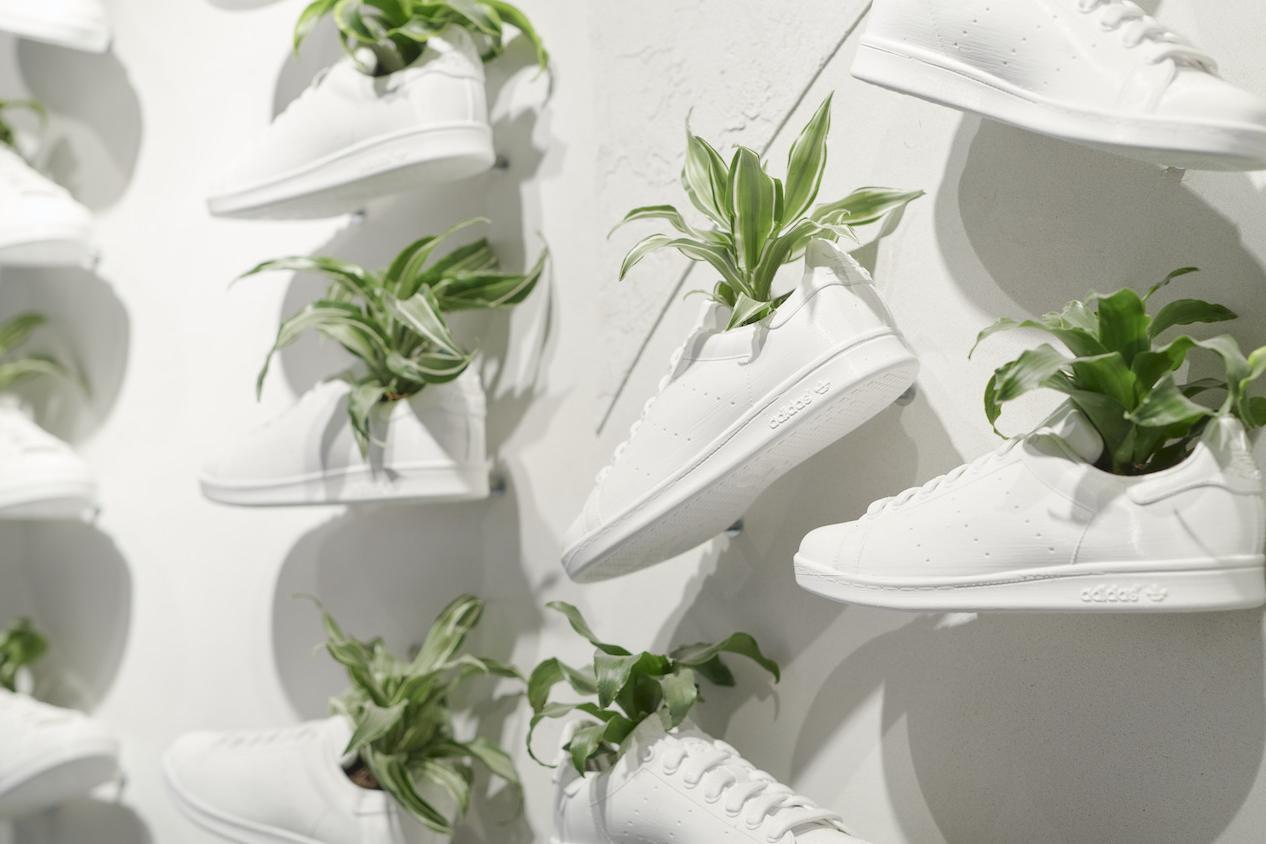
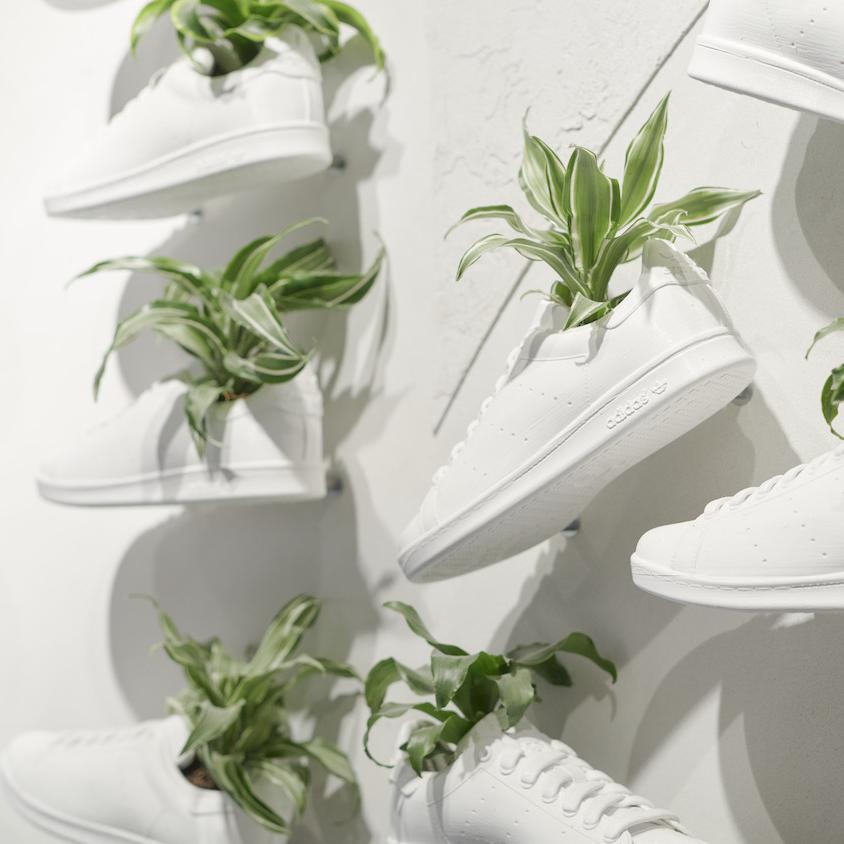
From fully recyclable running shoes to vegan leather made from fungi, Adidas has big plans for 2021. In a press announcement on Monday, the footwear giant pledged to include sustainable materials, such as recycled polyester and sustainably-grown cotton, in more than 60 percent of the products it sells next year. How will it reach this 2021 milestone? Let's take a look inside its materials portfolio to find out.
New vegan leather alternative drives buzz
Adidas is no stranger to plant-based leather alternatives, having launched vegan versions of several classic styles in 2020 — including the cult favorite Stan Smith (pictured above). But the company plans to take plant-based material innovation one step further in 2021.
News that Adidas is developing its own vegan leather quickly generated buzz this week. Made from mycelium, a component of fungus, the biological leather alternative is set to debut in footwear next year, although specifics are slim.

Slow but steady progress on circularity
Adidas has steadily increased its use of recycled materials over the past decade, with more upticks planned for 2021. More than 60 percent of the polyester in its branded footwear and clothing is now recycled, and Adidas is targeting exclusively recycled polyester by 2024.
The company is also looking to support the development of circular production models through research partnerships, including efforts to transform used clothes into a cotton-like material. A fully recyclable version of the Ultraboost shoe, made from a single material without glue, was raffled off in October, and Adidas plans to launch a successor in a larger volume in the spring of next year.
The purchase and development of new recycled materials will be partially funded by a sustainability bond the company issued in September, valued at more than $600 million, which was five times oversubscribed.
"We have continued to invest in sustainability initiatives during the coronavirus pandemic, and we will significantly expand our range of sustainable products in 2021. To this end, for example, we have worked with our suppliers to create the structures that make it possible to process recycled materials on a large scale," Adidas CEO Kasper Rorsted said in a statement. "Not only does our commitment make adidas more sustainable, but it also drives the development of the whole industry."

Ocean plastic products prove to be a consumer hit
Adidas already has lofty sustainability ambitions on record, including a brazen objective to "end plastic waste." A five-year partnership with the pollution awareness initiative Parley for the Oceans has slowly inched the company closer.
Adidas and Parley launched their first shoe made with plastic collected from beaches and coastlines in 2015 and have sold millions since, including 15 million pairs in 2020 alone. The partners collected almost 7,000 tons of plastic last year, the equivalent to around 350 million plastic bottles, which Adidas will use to produce around 17 million pairs of shoes, among other products, in 2021.
Images courtesy of Adidas
Consumer Goods Companies Pledge to Work Together to Support Communities Affected by COVID-19
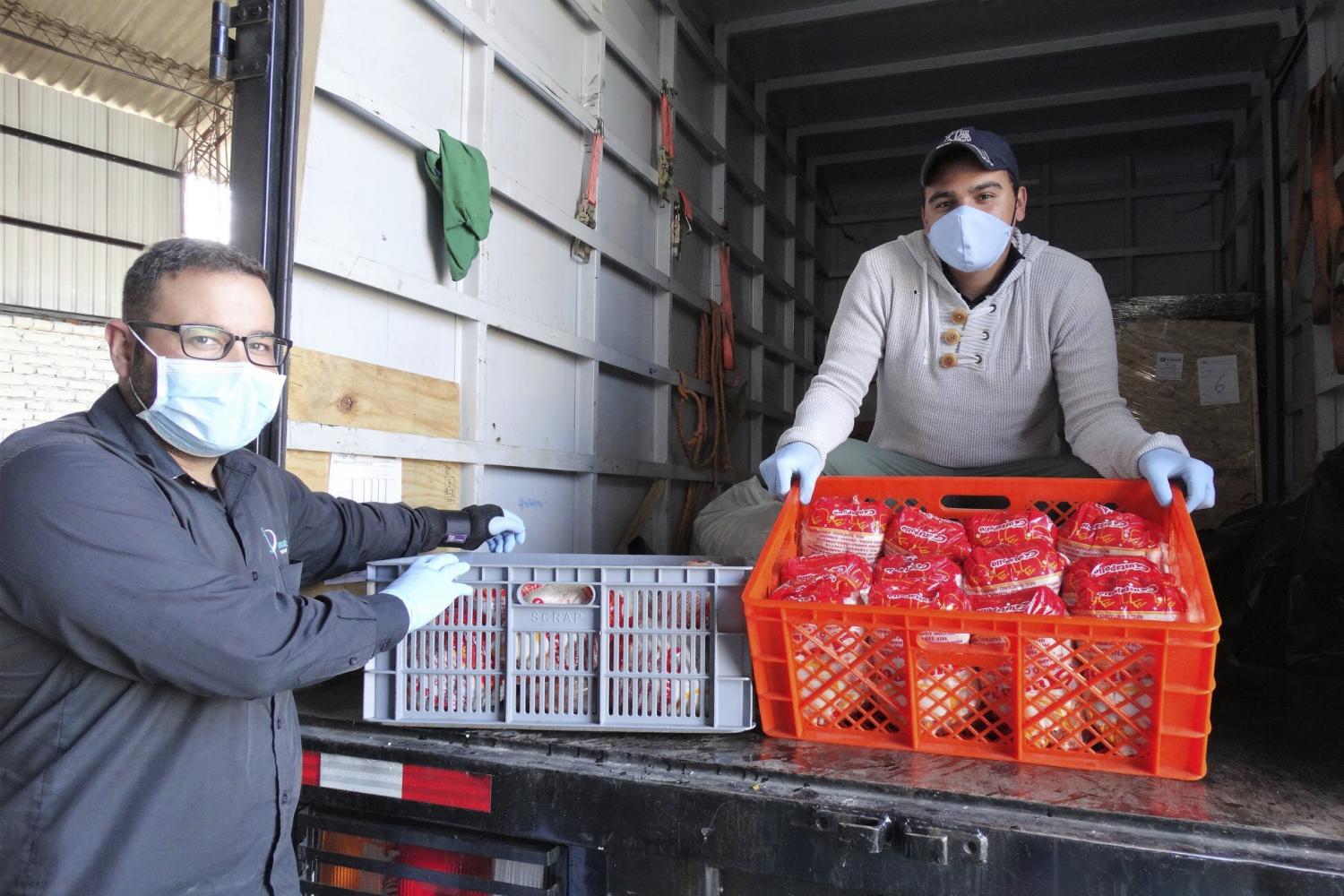

Image: PepsiCo, one of the companies involved in this latest collaboration to fight the social effects of COVID-19, has already donated more than $45 million to combat rising hunger related to the pandemic and distributed over 50 million meals worldwide.
The Consumer Goods Forum is rallying corporate members in a coordinated effort to support communities most affected by COVID-19. The move follows a statement from CEOs in the food and personal care space, who called on their peers to step up and act locally.
Beyond the direct health impacts of the pandemic, the accompanying economic crisis is the most devastating seen in a generation. Worldwide, COVID-19 could push up to 115 million people into extreme poverty this year (meaning they earn less than US$1.90 a day), the first increase in global extreme poverty in over two decades — and advocates warn the world's poorest may be among the last to receive a vaccine.
Even in wealthy countries like the U.S., conditions are stark and worrisome. More than 14 million people in the U.S. are out of work. Up to 13 million renter households are at risk of eviction, with CDC protections set to expire at the end of the year. And an additional 17 million U.S. residents could become food insecure because of the pandemic, bringing the total to more than 54 million people in the country, including 18 million children.
"This is a critical time for us. Our members recognize their responsibility to meet the needs of the most vulnerable," Wai-Chan Chan, managing director of the Consumer Goods Forum, said in a statement. The trade group identified a series of actions to accelerate support for vulnerable communities, which include deploying cash and in-kind donations and developing partnerships with community groups.
Some of the world’s largest retailers and manufacturers, including Walmart, Unilever, Colgate-Palmolive, General Mills and PepsiCo, signed on to follow the roadmap and work with each other on a collective response.
Aligning the industry's response effort is a potentially significant development. The 45 companies that signed on to the Forum's effort have already collectively donated hundreds of billions of dollars in response to the pandemic, but without coordinating with each other and with community groups on the ground, it's harder to see the impact on a broader scale or identify where gaps may exist in underserved communities.
"We must act together and intensify how our products and services reach these most vulnerable populations and mitigate the negative health and economic burdens that families around the world are experiencing during COVID-19," Nestlé CEO Mark Schneider and Ahold Delhaize CEO Frans Muller said in a joint statement on behalf of CEO members of the Forum's board of directors. "We need to go further and faster together.”
"It is hoped that by joining forces and focusing on local actions, member companies aim to move faster and more efficiently, while empowering the local teams, who are best placed to know what’s needed and how to work with key local partners and authorities, to implement at speed," the Forum's announcement goes on to say.
The trade group says it will collect feedback on members' response efforts in the coming months and publish a progress report by the spring of next year. Members will also share their experiences with each other via the CGF’s Global Learning Mechanism.
Image credit: Banco de Alimentos Quito for PepsiCo (press use only)